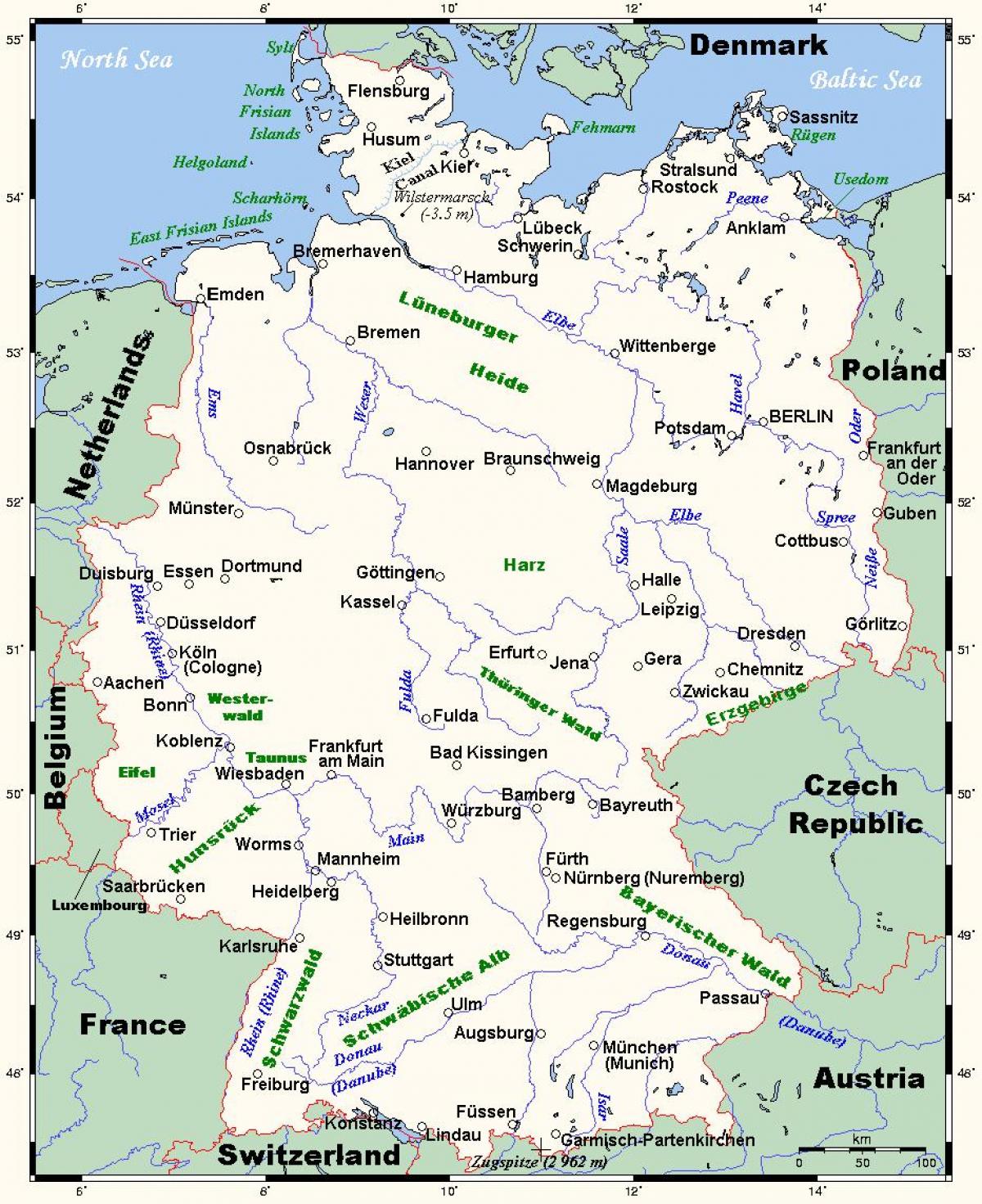search
Rivers in Germany map
Map of Germany rivers. Rivers in Germany map (Western Europe - Europe) to print. Rivers in Germany map (Western Europe - Europe) to download. The three main rivers in Germany as you can see in rivers in Germany map are: the Rhine (Rhein in German) with a German part of 865 km (main tributaries including the Neckar, the Main and the Moselle (Mosel)); the Elbe with a German part of 727 km (also drains into the North Sea); and the Danube (Donau) with a German part of 687 km. Further important rivers include the Isar in the southeast, the Main in central Germany, the Neckar in the southwest, and the Weser in the North. See also the list of rivers in Germany.
Most German rivers follow the general north-northwestward inclination of the land, eventually entering the North Sea. The major exception to the rule is the Danube, which rises in the Black Forest and flows eastward as its shown in rivers in Germany map, marking approximately the boundary between the Central German Uplands and the Alpine Foreland. The Danube draws upon a series of right-bank Alpine tributaries, which, through reliance on spring and summer snowmelt, make its regime notably uneven. Further exceptions are the Altmühl and the Naab, which follow a southerly direction until becoming north-bank tributaries of the Danube, and the Havel, which flows south, west, and north before emptying into the Elbe River. River flow relates mainly to climate, albeit not in a simple way; for example, in all but Alpine Germany, maximum river flow occurs in winter when evaporation is low, though in the lowlands the peak rainfall is in summer.
The most majestic of the rivers flowing through Germany is the Rhine. It has its source in east-central Switzerland and flows west through Lake Constance (Bodensee), skirting the Black Forest to turn northward across the Central German Uplands. Below Bonn the Rhine emerges into a broad plain, and west of Emmerich it enters The Netherlands to issue into the North Sea. The Rhine belongs to two types of river regimes as its mentioned in rivers in Germany map. Rising in the Alps, it profits first from the extremely torrential Alpine regime, which causes streams to be swollen by snowmelt in late spring and summer. Then, by means of its tributaries—the Neckar, Main, and Moselle (German Mosel)—the Rhine receives the drainage of the Central German Uplands and the eastern part of France, which contributes to a maximum flow during the winter.
The Weser and Elbe rise in the Central German Uplands, crossing the North German Plain to enter the North Sea as you can see in rivers in Germany map. The northward-flowing Oder (with its tributary, the Neisse) passes through the northeastern part of the country and a small section of Poland before emptying into the Baltic Sea. The navigation of these rivers is often adversely affected in the summer by low water and in the winter by ice, which increases eastward. River courses in the northern lowlands have a notably trellised pattern—rivers follow the ice-margin stream trenches (Urstromtäler) carved outside the fringes of the retreating ice sheets before breaking through the next moraine ridge to the north. This pattern greatly facilitated the cutting of canals linking the Rhine River with Berlin and the Elbe and Oder rivers.


